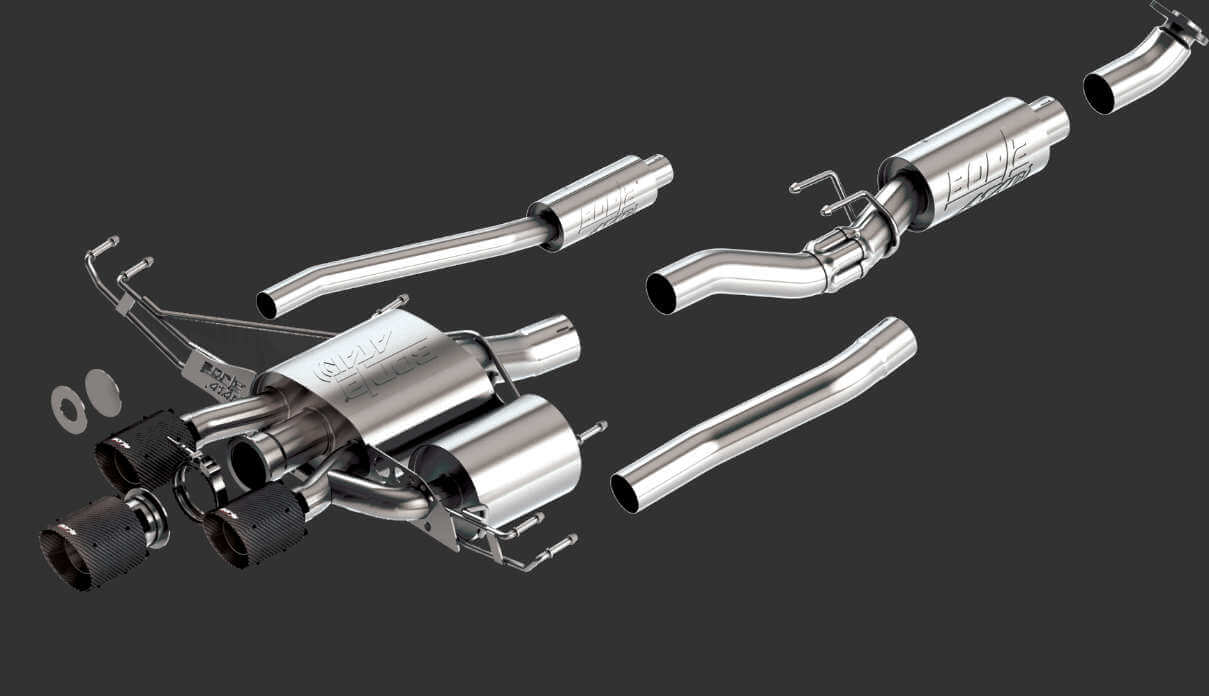Performance exhaust systems have come a long way since the early days of automotive engineering. From the basic stock exhaust systems that come standard on most vehicles to custom-designed exhaust setups that maximize power and efficiency, the evolution of performance exhaust systems has been a fascinating journey. In this article, we will explore how performance exhaust systems have evolved over the years, from their humble beginnings to the high-performance setups of today.
Stock Exhaust Systems
Stock exhaust systems are designed by manufacturers to meet a variety of requirements, including noise regulations, emissions standards, and cost considerations. These exhaust systems are typically made from mild steel and are optimized for overall efficiency rather than maximum performance. While stock exhaust systems are perfectly adequate for everyday driving, they can be a limiting factor for enthusiasts looking to maximize the performance of their vehicles.
Enthusiasts often choose to upgrade their exhaust systems to aftermarket options that offer less restrictive airflow, leading to increased horsepower and torque. Aftermarket exhaust systems are typically made from higher-quality materials such as stainless steel or titanium, which offer better durability and corrosion resistance.
They also often feature larger-diameter piping and performance mufflers designed to enhance the sound of the engine. By replacing the stock exhaust system with an aftermarket option, enthusiasts can unleash the full potential of their vehicle’s engine, resulting in improved acceleration, throttle response, and overall driving experience.
However, it’s important to note that modifying the exhaust system may void the vehicle’s warranty and could potentially lead to non-compliance with local noise and emissions regulations. Therefore, it’s crucial to research and choose a reputable aftermarket exhaust system that meets both performance and legal requirements.
Aftermarket Exhaust Systems
As automotive enthusiasts began to modify their vehicles for increased performance, the aftermarket exhaust industry saw significant growth. Aftermarket exhaust systems are designed to improve exhaust flow, reduce back pressure, and enhance the sound of the vehicle.
These systems are typically made from higher quality materials such as stainless steel or titanium, which offer better durability and corrosion resistance compared to stock systems. The aftermarket exhaust systems also often feature larger diameter piping and mandrel bends to further optimize the exhaust flow, resulting in improved horsepower and torque gains.
In addition to performance benefits, aftermarket exhaust systems can also enhance the aesthetic appeal of a vehicle with their polished finishes and sleek designs. Overall, the aftermarket exhaust industry continues to thrive as car enthusiasts seek to customize and improve the performance of their vehicles.
Performance Exhaust Headers
One key component of a performance exhaust system is the exhaust headers. Stock exhaust manifolds are often restrictive and can impede exhaust flow, limiting the power output of the engine. Performance exhaust systems are designed with smooth, mandrel-bent tubing that allows exhaust gases to flow more freely, increasing horsepower and torque.
Headers are available in a variety of configurations, including shorty headers, mid-length headers, and long-tube headers, each offering different benefits depending on the application. Shorty headers are a good choice for those looking for a simple upgrade that still provides a noticeable increase in performance.
Mid-length headers offer a balance between performance and ease of installation, making them a popular option for many enthusiasts. Long-tube headers are ideal for maximum power gains, especially in high-performance applications where every bit of horsepower counts. Upgrading to performance exhaust headers is a great way to improve the overall performance and sound of your vehicle.
Custom Exhaust Systems
For enthusiasts looking to extract the maximum performance from their vehicles, custom exhaust systems offer a tailored solution. Custom exhaust setups are designed specifically for the vehicle and its intended use, taking into account factors such as engine modifications, driving style, and performance goals.
These systems are often handcrafted from premium materials such as Inconel or carbon fiber and can include features such as high-flow catalytic converters, resonators, and mufflers tuned for optimal performance. Custom exhaust systems are highly sought after by performance enthusiasts who want to enhance their vehicle’s power, torque, and overall driving experience.
These bespoke setups are meticulously designed to maximize airflow, minimize back pressure, and deliver a distinct sound that complements the vehicle’s character. By working closely with experienced fabricators and tuners, car owners can achieve the perfect balance of power gains, efficiency, and aesthetics with a custom exhaust system.
Exhaust System Tuning
In addition to upgrading the physical components of the exhaust system, tuning plays a crucial role in maximizing performance. Engine tuning, including adjustments to fuel delivery, ignition timing, and air intake, can complement the improvements made to the exhaust system, resulting in significant power gains.
Tuning can be done through standalone engine management systems or piggyback tuners, allowing enthusiasts to fine-tune their vehicle’s performance to suit their specific needs. By fine-tuning these parameters, enthusiasts can optimize their engine’s output, responsiveness, and overall efficiency.
This comprehensive approach ensures that all aspects of the vehicle work in harmony to deliver the best possible performance. Whether it’s for track racing, daily driving, or simply enhancing the driving experience, tuning is a critical element in getting the most out of an upgraded exhaust system. It allows for customization and personalization, giving car owners the ability to tailor their vehicle’s performance characteristics to their liking. Ultimately, tuning is the key to unlocking the full potential of an upgraded exhaust system and achieving peak performance levels.
Conclusion
Looking ahead, the evolution of performance exhaust systems is likely to continue as automotive technology advances. With the increasing popularity of electric vehicles, performance exhaust systems may become less common in the future. However, for internal combustion engine enthusiasts, the quest for more power and better sound will drive further innovation in exhaust system design. From advanced materials to integrated exhaust and hybrid powertrains, the future of performance exhaust systems is full of exciting possibilities.


